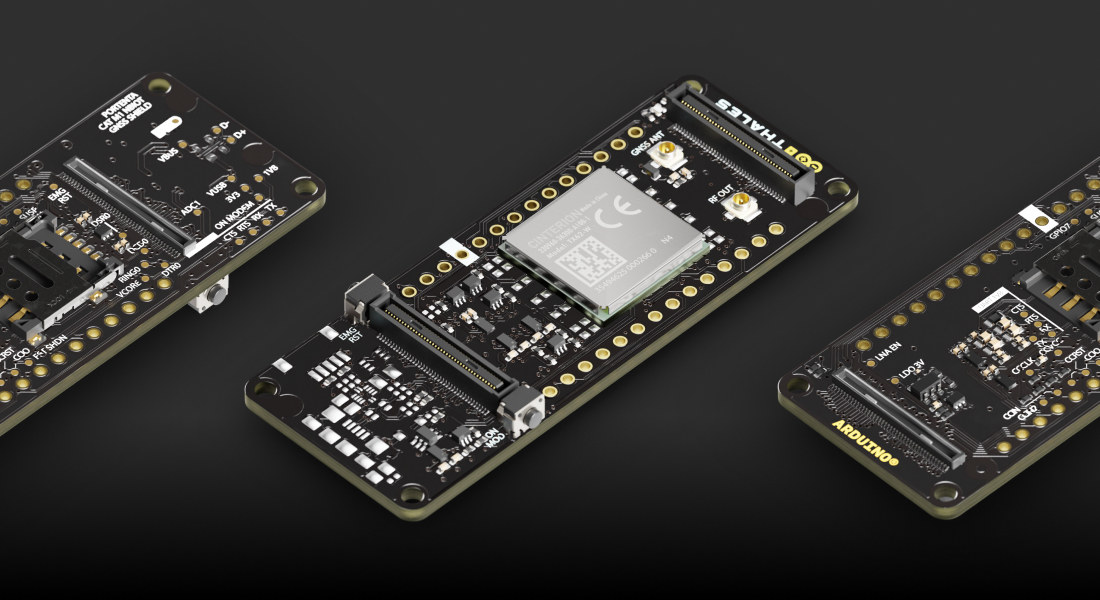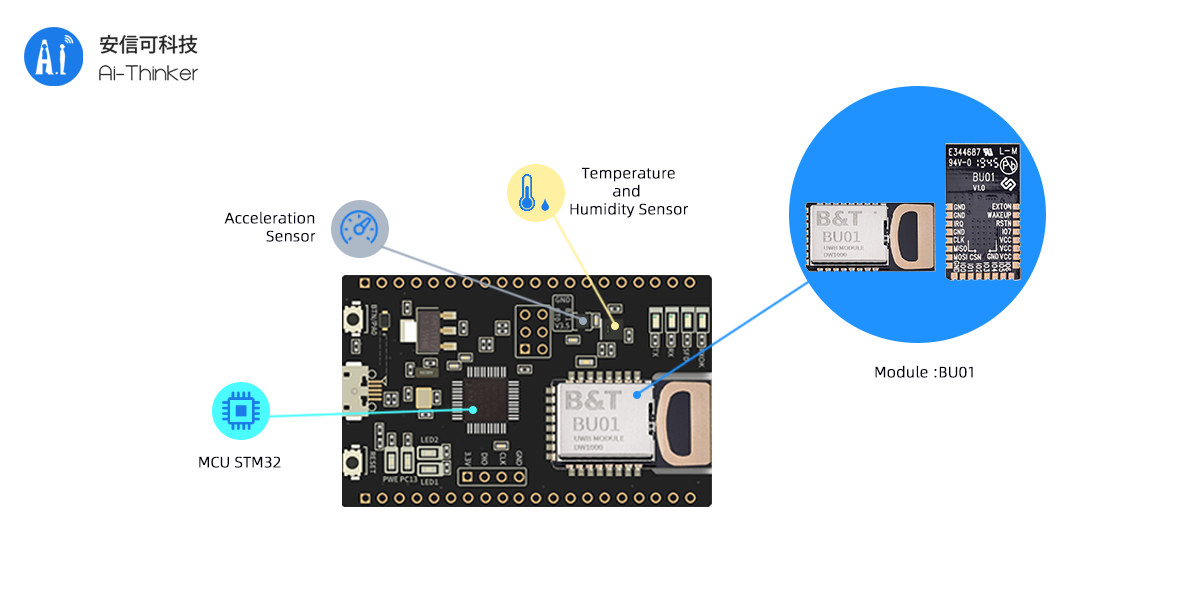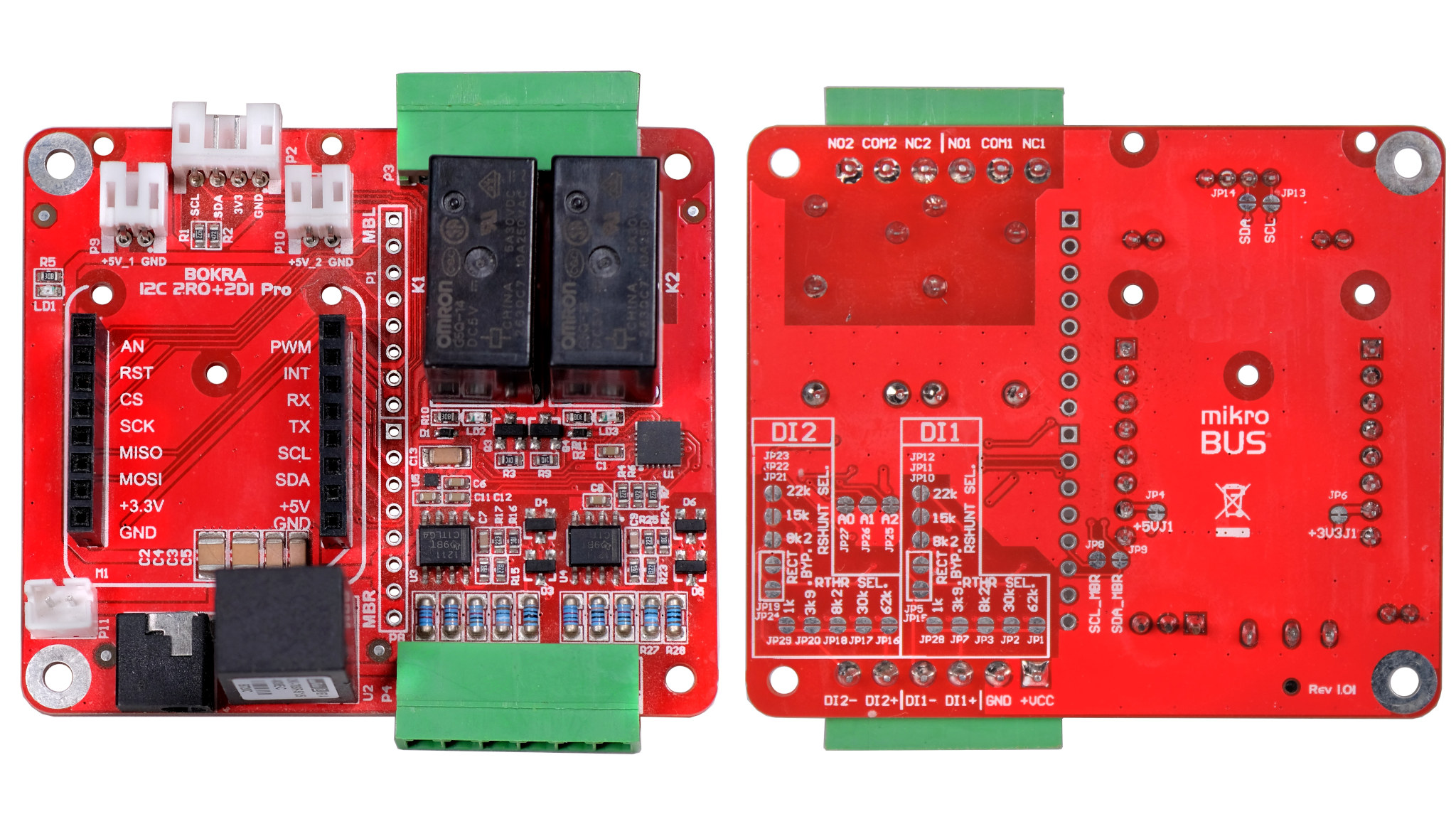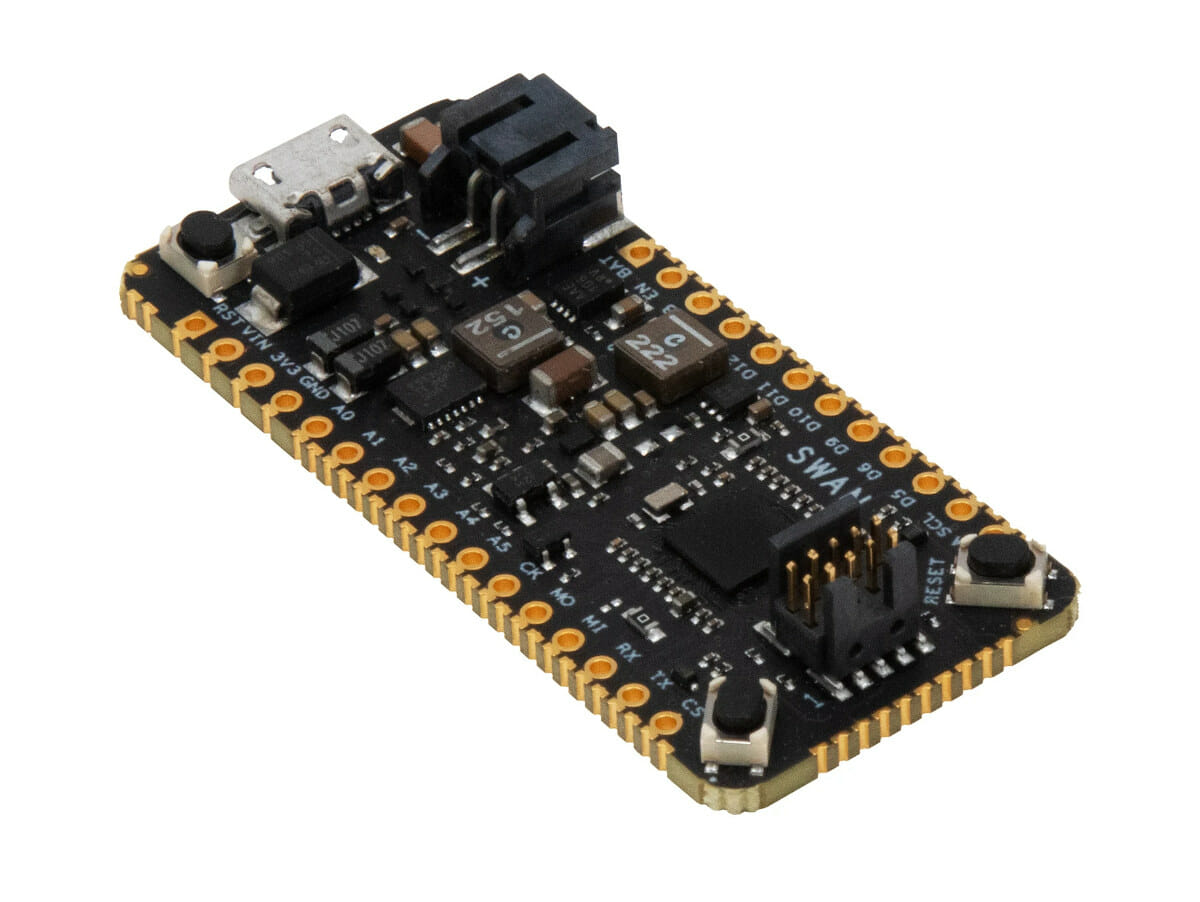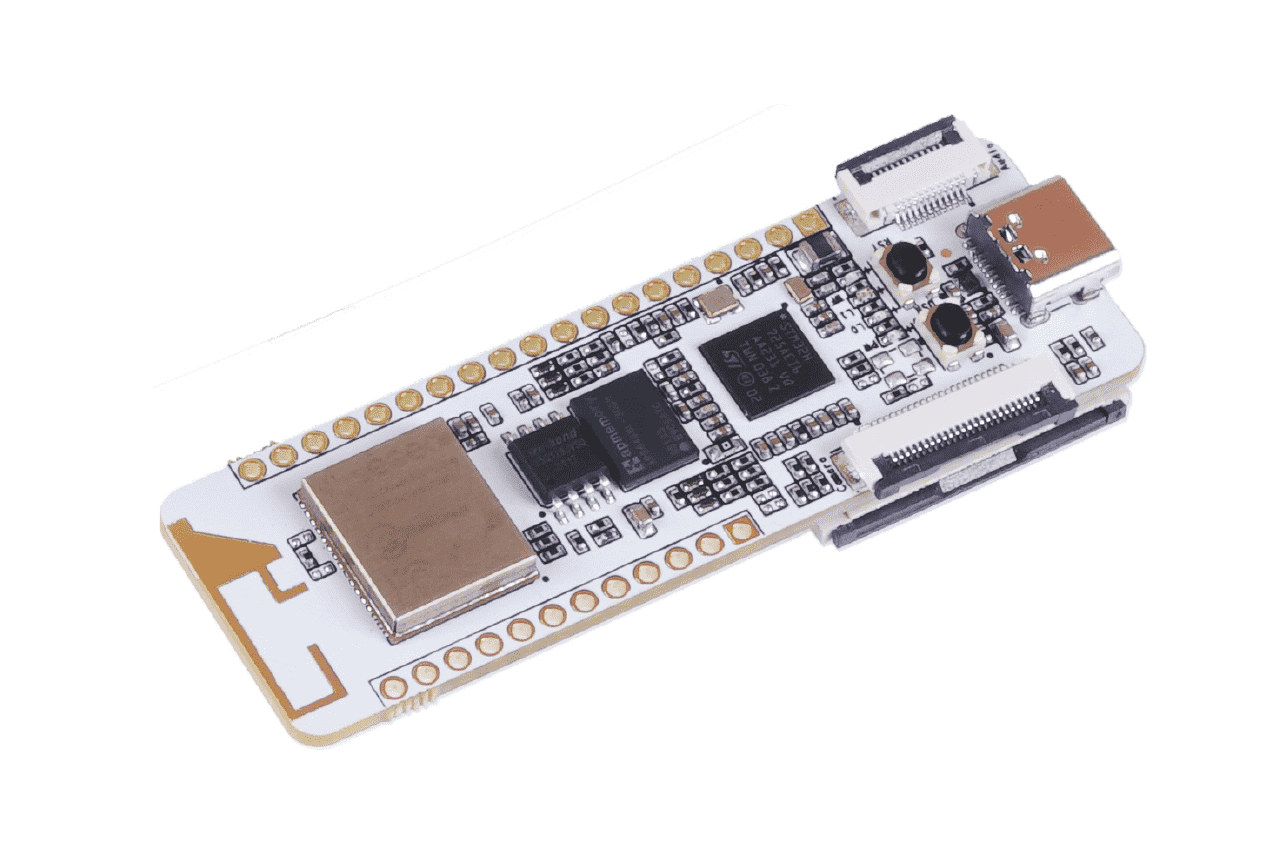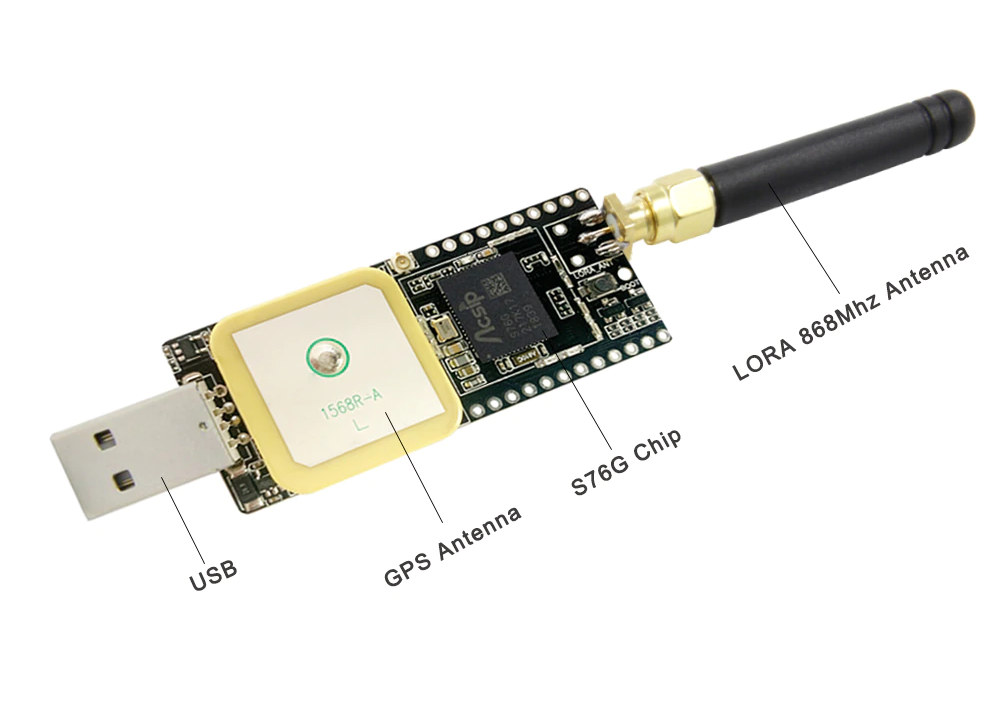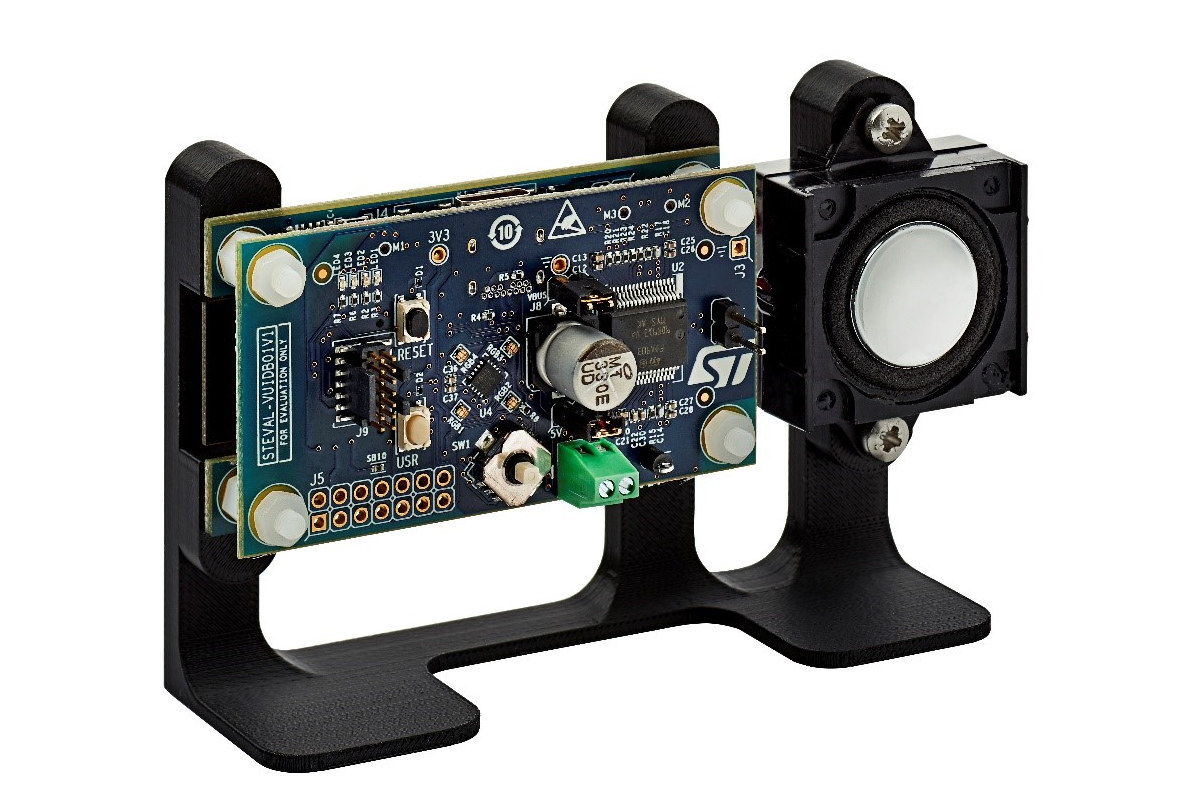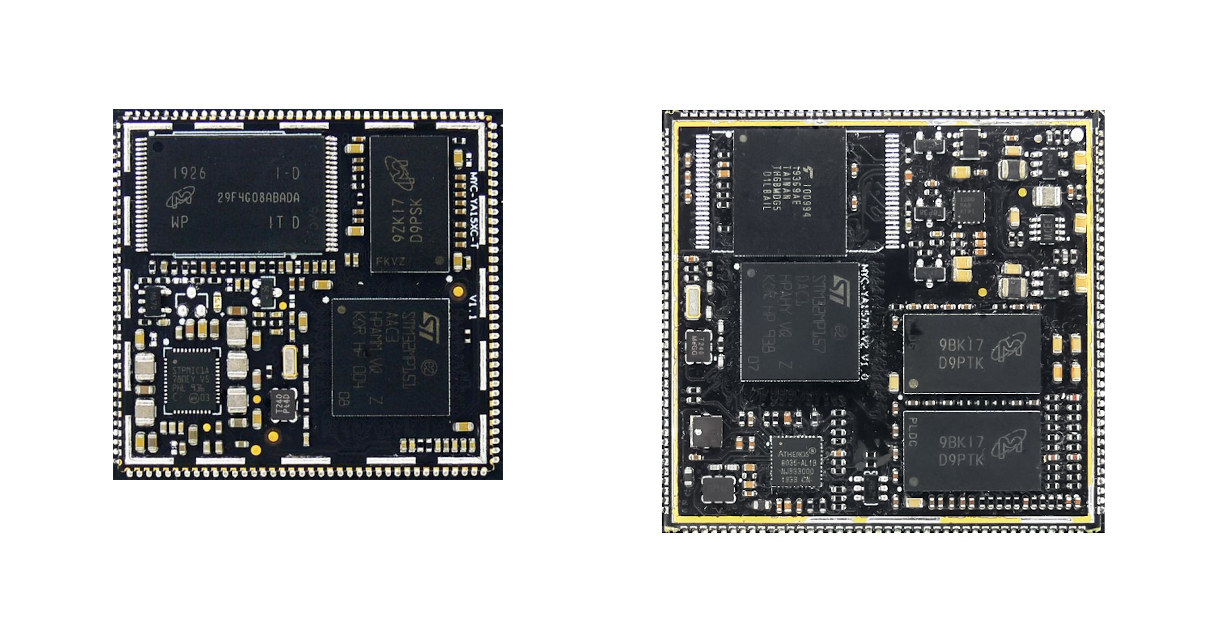Arduino PRO Portenta family of industrial boards is getting a new LTE Cat. M1/NB-IoT GNSS shield that adds global connectivity and positioning capabilities through the Cinterion TX62-W LPWAN IoT module by Thales. The shield works with the Portenta H7 board as well as its lower-cost variants and Arduino MKR boards and will power industry 4.0 and edge computing solutions such as positioning, asset tracking, and remote monitoring applications at the factory, in agriculture, public utilities, and smart cities. Portenta CatM1 shield specifications: Cinterion TX62-W module with: 3GPP Rel.14 Cat.M1, Cat.NB1, Cat.NB2 Global coverage with a single SKU FDD-LTE Bands – 1, 2, 3, 4, 5, 8, 12, 13, 18, 19, 20, 25, 26, 27, 28, 66, 71, 85 LTE Cat. M1 – DL: max. 300 kbps, UL: max. 1.1 Mbps LTE Cat. NB1 – DL: max. 27 kbps, UL: max. 63 kbps LTE Cat. NB2 – DL: max. 124 kbps, […]
Indoor positioning BU01 development board can detect tiny body movements (Sponsored)
GPS is available for outdoor positioning, what about indoors? There is a positioning technology that is more accurate than GPS: UWB. The technology offers positioning accuracy within 10cm which greatly compensates for the shortcomings of the indoor RSSI positioning of past IoT products. UWB technology is a wireless carrier communication technology that uses a frequency bandwidth above 1 GHz. It does not use a sinusoidal carrier but uses nanosecond-level non-sinusoidal narrow pulses to transmit data and occupies a large frequency spectrum, hence the name “Ultra-Wideband”, or UWB for shorts. Besides positioning, UWB can also be used for data transmission with a rate of hundreds of megabits per second. BU01 development board features MCU – STMicro STM32F103 Arm Cortex-M3 microcontroller UWB module – Ai-Thinker BU01 module 50 I/O pins exposed for functions. Sensors – Onboard acceleration sensor, temperature, and humidity sensor Misc – User buttons and LED Power Supply – 5V […]
IoThing Digital IO board handles up to 300V for Arduino, Raspberry Pi, and various other boards (Crowdfunding)
AlterStep’s IoThing Digital is a digital I/O module with two high-power Omron G5Q-14 relays and two isolated AC or DC input channels based on Texas Instruments ISO1211 that can handle up to 300 V. The board also integrates a DC-DC converter and mikroBUS slot that allows it to be used with compatible MCU boards, and the company also provides adapters for popular form factors such as Arduino, Raspberry Pi, Adafruit Feather, Teensy, and others. IoThing Digital specifications: mikroBUS socket for mikroElektronika Click expansion boards BOKRA Lite MCU boards (Some details below) 2x Omron G5Q-14 SPDT relays – 3A/30V DC or 3A/250VAC via terminal blocks Terminal block for 2x digital outputs configurable from 9V to 300V, DC and AC PCF8574 8-bit I/O expander chip with I²C bus for relay control and digital signal input I2C interface with support for 100 KHz and 400 KHz, address selection via jumpers Grove I2C connector […]
Blues Wireless Swan board adds castellated holes to Adafruit Feather form factor
We’ve often written about Adafruit Feather-compatible boards in the past, but Blues Wireless Swan board is a little different, as the STM32L4-based board comes with castellated holes instead of just through holes which allows the board to expose up to 55 GPIOs, or 36 more pins than a traditional feather-compatible board. The company also introduced the “Feather Starter Kit for Swan” that enables the board to work with the company’s Notecard LTE Cat-M/NB-IoT M.2 modem that ships with 10-year (up to 500MB) of IoT connectivity, as well as GPS/GNSS connectivity. The Swan board Swan specifications: MCU – STMicro STM32L4R5 Arm Cortex-M4 microcontroller clocked at 120Mhz with 2MB of flash and 640KB of RAM USB – 1x Micro USB port for power and programming Castellated holes giving access to 55 GPIO including: 8x analog input 16x digital 4x I2C, 3x SPI 1x USB OTG full speed 1x 14-channel DMA 12-bit ADC, […]
Wio Lite AI – An STM32H725A Cortex-M7 board for AI vision applications
Wio Lite AI is another development board from Seeed Studio’s “Wio Lite” family. The board is based on STMicro STM32H725A Cortex-M7 microcontroller with a dual-band WiFi and Bluetooth module, as well as camera & display interfaces for connected AI vision applications. The board builds upon the earlier Wio Lite and Wio Lite W600 boards with built-in wireless connectivity but offers much more processing power for computer vision or other applications. Wio Lite AI specifications: MCU – STMicro STM32H725AE Arm Cortex-M7 microcontroller @ 550MHz with DSP instructions, 512 KB flash, 564 KB RAM Memory – 8MB PSRAM (from AP Memory) Storage – 16MB SPI NOR flash and MicroSD card slot Display I/F – 40-pin FPC connector for LCD RGB565 or RGB888 displays Camera – 24-pin FPC connector for DCMI camera (OV2640) Audio – 12-pin FPC connector for audio Connectivity – Dual-band 2.4GHz / 5GHz Wi-Fi and Bluetooth 5.1 Expansion – Feather […]
TTGO T-Motion USB adapter offers LoRa and GPS for under $30
USB adapters are one of the easiest ways to add new features to existing hardware, and if you’d like to add LoRa connectivity and GPS tracking to any device or board with a USB board TTGO T-Motion USB adapter offers just that. Manufactured by LilyGO, the USB dongle is based on AcSiP S76G system-in-package that integrates an STM32 MCU with a Semtech SX1276 LoRa transceiver and GPS into a single. The GPS antenna is placed on the board inside the enclosure, while the external LoRa antenna is connected through an SMA connector. TTGO T-motion specifications: SiP – AcSiP S76G system-in-package with STMicro STM32L073x Arm Cortex M0+ MCU with up to 192 KB of Flash memory and 20 KB of RAM, Semtech SX1276 supporting global 868 MHz or 915 MHz ISM-Bands, Sony CXD5603GF GNSS receiver. Antenna Internal GPS antenna External LoRa antenna Host interface – USB 2.0 male port Misc – […]
STEVAL-VOICE-UI Amazon qualified Alexa Smart Home evaluation kit is based on STM32H7 MCU
We’ve already covered plenty of Amazon-qualified development kits working with Alexa Voice Services. But here’s another one with STEVAL-VOICE-UI evaluation kit making it to the list of Smart Home Dev Kits, which Amazon describes as “reference designs for creating smart home products such as light switches, thermostats, or Wi-Fi routers”. STEVAL-VOICE-UI voice user interface (VUI) evaluation kit features an STMicro STM32H7 Arm Cortex-M7 microcontroller with 2 MB embedded flash, 1 MB embedded SRAM, 2.4 GHz Wi-Fi, and a microphone array with three MEMS microphones, as well as a loudspeaker, and some buttons and LEDs. STEVAL-VOICE-UI key features specifications: Microcontroller – STMicro STM32H753VIT6E Cortex-M7 MCU @ up to 550 MHz with 2 MB flash, 1 MB SRAM Connectivity – 2.4 GHz Wi-Fi subsystem (Murata 1DX module) coupled to 2MB NOR flash (ISSI IS25LP016D) Audio 3x MP23DB01HP MEMS microphones with 36 and 30 mm spacing FDA903D class D digital input automotive audio […]
A Smaller STM32MP1 SoM – Meet MYIR MYC-YA15XC-T CPU Module
MYIR launched a fairly compact SoM and accompanying development board based on STM32MP1 Cortex-A7 microprocessor in January 2020. But apparently, the 45mm by 43mm MYC-YA157C module was too big (or expensive) for some customers, so the company has now designed a smaller STM32MP1 SoM with MYC-YA157C-T measuring just 39mm by 37mm thanks to the removal of the Ethernet PHY. MYC-YA15XC-T STM32MP1 system-on-module Specifications: SoC (one or the other) STM32MP151AAC3 single-core Cortex-A7 processor up to @ 800 MHz with Cortex-M4 core @ 209 MHz STM32MP153AAC3 dual-core Cortex-A7 processor up to @ 800 MHz with Cortex-M4 core @ 209 MHz, and CAN FD interface STM32MP157AAC3 dual-core Cortex-A7 processor up to @ 800 MHz, with Cortex-M4 core @ 209 MHz, 3D GPU, DSI display interface, and CAN FD Two configurations for memory and storage 256MB DDR3L, 256MB Nand Flash, 32KB EEPROM or 512MB DDR3L, 4GB eMMC Flash, 32KB EEPROM 148-pin stamp hole expansion […]


